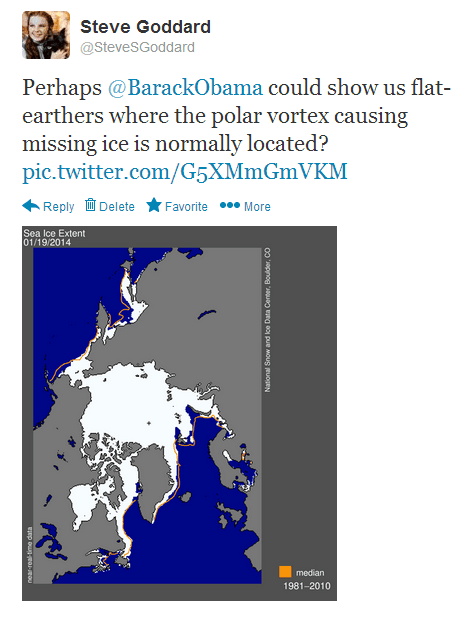Disrupting the Borg is expensive and time consuming!
Google Search
-
Recent Posts
- New Visitech Features
- Ice-Free Arctic By 2014
- Debt-Free US Treasury Forecast
- Analyzing Big City Crime (Part 2)
- Analyzing Big City Crime
- UK Migration Caused By Global Warming
- Climate Attribution In Greece
- “Brown: ’50 days to save world'”
- The Catastrophic Influence of Bovine Methane Emissions on Extraterrestrial Climate Patterns
- Posting On X
- Seventeen Years Of Fun
- The Importance Of Good Tools
- Temperature Shifts At Blue Hill, MA
- CO2²
- Time Of Observation Bias
- Climate Scamming For Profit
- Climate Scamming For Profit
- Back To The Future
- “records going back to 1961”
- Analyzing Rainfall At Asheville
- Historical Weather Analysis With Visitech
- “American Summers Are Starting to Feel Like Winter”
- Joker And Midnight Toker
- Cheering Crowds
- Understanding Flood Mechanisms
Recent Comments
- Bob G on Ice-Free Arctic By 2014
- conrad ziefle on Ice-Free Arctic By 2014
- Bob G on Ice-Free Arctic By 2014
- conrad ziefle on New Visitech Features
- Robertvd on Ice-Free Arctic By 2014
- Stuart Hamish on New Visitech Features
- Stuart Hamish on New Visitech Features
- Stuart Hamish on New Visitech Features
- Disillusioned on Ice-Free Arctic By 2014
- Disillusioned on Ice-Free Arctic By 2014
Request From The Climatologist In Chief
This entry was posted in Uncategorized. Bookmark the permalink.



Reblogged this on Climate Ponderings.
Unfortunately, Steven, Climatologist in Chief knows more about climate than he knows about representing the citizens of this once great country.
The truth is slipping past all the official “keepers of knowledge” for wanna-be world tyrants. In summary,
We will go to the nucleus because that is where energy is stored as mass.
We will first get honest about nuclear forces so engineers and technicians can safely harvest and use that energy to benefit society:
1. Neutrons attract protons
2. Protons attract neutrons
3. Neutrons repel neutrons
4. Protons repel protons
5. Coulomb repulsion augments #4 and makes #4 much greater than #3, especially in heavy elements.
Nuclear structure and modes of decay reflect these five (1-5) forces.
In light elements, the core of the nucleus is n-p pairs. Excess neutrons exist on the nuclear surface. Neutron emission is a mode of decay for these.
Above about 150 amu, the nuclear structure changes because of high Coulomb repulsion. The n-p pairs move to the nuclear surface and the excess neutrons move to the core of the nucleus. Alpha-decay, emission of the He-4 nucleus (2 n-p pairs), is a common mode of decay for these.
These forces cannot hold together any nucleus above Bi-209 (83 protons and 126 neutrons). All heavier atoms are unstable.
Neutron-rich cores of even heavier atoms (Th, U, Np, Pu, etc) have high instabilities induced by neutron repulsion in the core. They may spontaneously fission. Or fission can be induced by adding one more neutron.
I suspect, but do not yet know, that energy from neutron repulsion could be harvested from many atoms above 150 amu by neutron-induced fission.
This information is also posted at http://chiefio.wordpress.com/2014/01/11/skunkworks-fusion/#comment-56544
Right next to his BC. 😉
Has anybody noticed Climatedepot is down?
Steve, the CIA should arrive at your door any day now.
Bastardi says the Eastern Seaboard is gonna get smacked again.